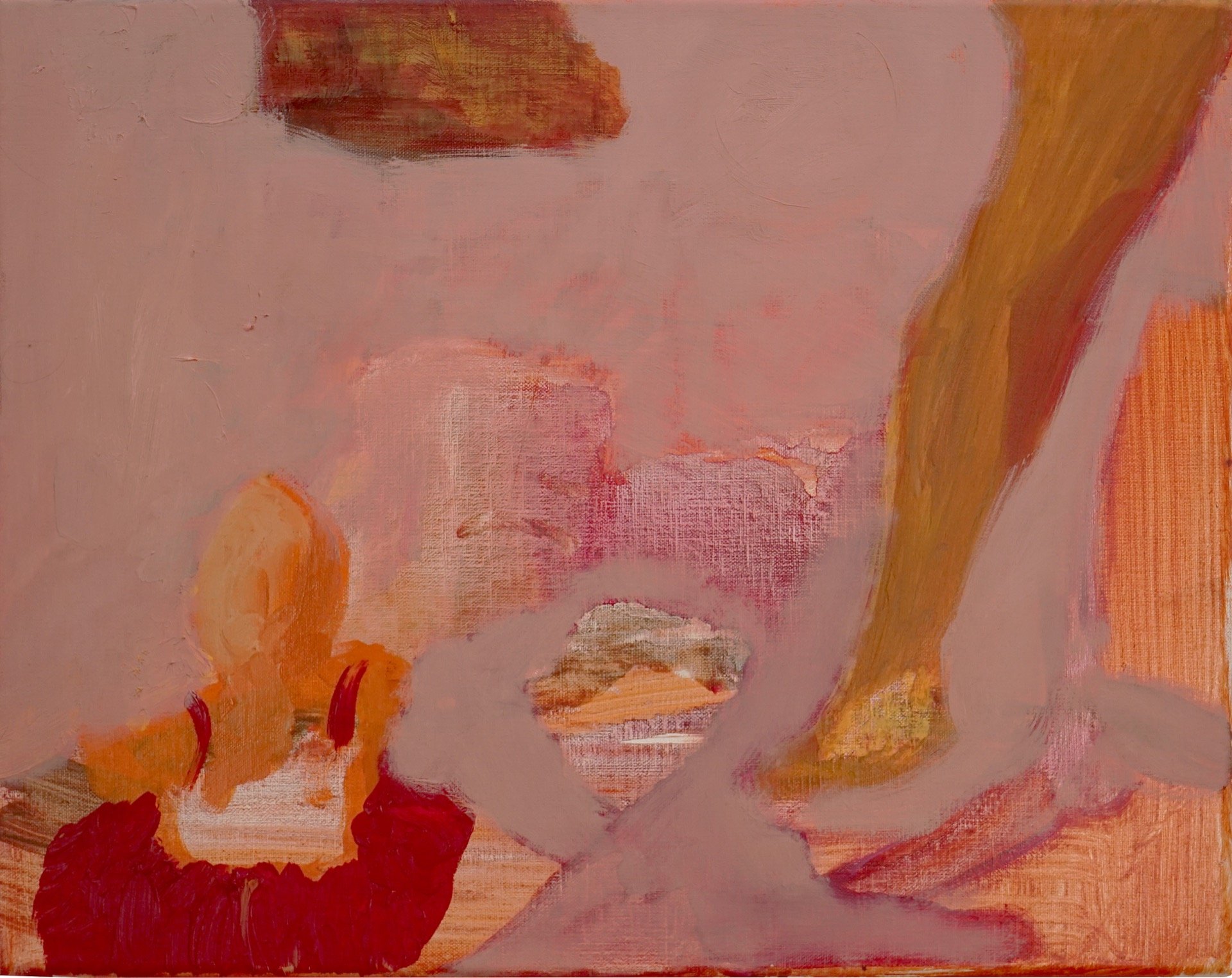CLAUDIA REGA
DA HINTEN IST DAS WO WIR HINWOLLEN
Vernissage April 20, 6 - 10 pm
Exhibition continues, April 21 - May 18 by appointment
Claudia Rega, At the pond peeing, 2022, Oil on canvas, 80 x 60 cm
For her very first solo exhibition at Karl Oskar Gallery, ‘Da hinten ist das wo wir hinwollen’ (Back there is where we want to go), Claudia Rega presents a series of paintings that explore the dangers and adventures of girlhood. Rega began her career as a professional psychologist.. Her work offers a fundamentally different perspective on childhood, diametrically opposed to the dainty, well-behaved girls commonly seen in historical painting. These are paintings which playfully tussle with abstraction and representation, in deep connection with the life-affirming forces of nature.
After her studies at the Academy of Fine Arts in Essen, Germany, Claudia Rega created purely abstract paintings, which defined much of her earlier work. The figure emerged as an object of interest sometime in 2018. Prior to this, Rega says, she looked at the figure with a mixture of scepticism and avoidance, mostly because of her profession as a psychotherapist, which had so much to do with the human condition. British artist Cecily Brown’s treatment of the figure, at the intersection of figuration and abstraction, was enormously influential for Rega.
Claudia Rega, Zöpfe Haare Kleider, 2022, Oil on canvas, 140 x 100 cm
The paintings, created using both acrylic and oil paints, are in constant motion. Layers are added over stretches of time and older details painted over; there are bursts of spontaneity and periods of long silence. Thus what emerges, is a topography of emotion over time. The use of oil sticks — a recent addition — adds a new staccato mark in the chaos of this organic landscape. Claudia Rega’s abstraction is always on the verge of nature, symbolic of its chaos, unpredictability and beauty. In this sense, her work shares a connection to Per Kirkeby: the interpretation of nature as abstraction. Also similar to Kirkeby, is the link to 19th century Romanticism. The human figure, as it appears in her work, is enfolded in nature and part of the sediment of living things, not separate from it.
Claudia Rega, Epiphyt, 2022, Oil on canvas, 130 x 100 cm
With bold colour and gesture she explores the experience a child’s connection to the natural world. The Hammock, which appears in many of the paintings, acts as a bridge — a man-made device that connects the girls to their organic surroundings. Rega says: “Since I was a girl, I experienced a sense of helplessness being described by others. The attributes they ascribed to me represented the world of others, a constriction I was forced to fit into.” These paintings represent a fantasy of freedom where rules and limitations no longer apply.
Amrita Dhillon
Claudia Rega, Summer dream attack, 2022, Oil on canvas, 100 x 120 cm
Claudia Rega, You do you, 2022, Oil on canvas, 140 x 160 cm
Claudia Rega, Da hinten ist das, wo wir hinwollen, 2022, Oil on canvas, 140 x 160 cm
Claudia Rega, Is it behind or in front 1, 2022, Oil on canvas, 40 x 50 cm
Claudia Rega, Is it behind or in front 2, 2022, Oil on canvas, 40 x 50 cm
Claudia Rega, Overthinking dreams, 2021, Oil on canvas, 50 x 40 cm
Claudia Rega, Big dreams after all, 2022, Oil on canvas, 70 x 50 cm














